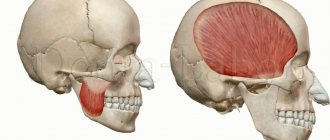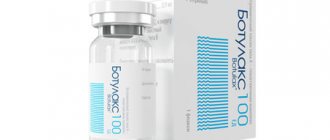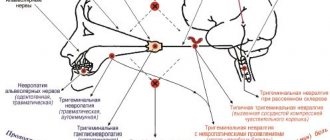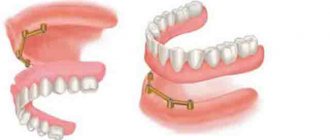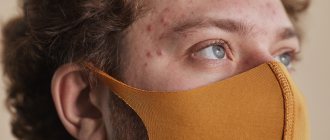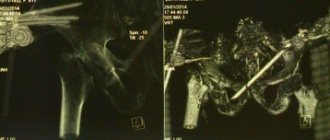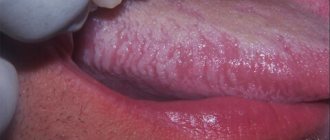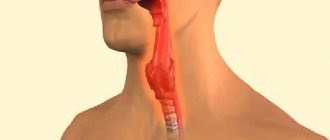Trismus is a spasm of the chewing muscles or their involuntary contraction. As a result of trismus, the jaws become closed and it is extremely difficult to open them. Usually the problem lies in impaired muscle function and tone, and this, in turn, can be associated with various diseases. It is very difficult to get rid of spasms of the jaw muscles on your own, so it is important to seek help from a dentist - he will assess the condition and refer you to specialists if necessary.
The mechanism of trismus occurrence
The chewing muscles set our jaw apparatus in motion. A sudden muscle contraction, accompanied by a strong closure of the jaws, limitation of the movement of the lower jaw, temporary loss of the ability to speak and eat, is called trismus. Strong clenching of teeth often causes breathing problems.
Excessive muscle tension leads to hardening. The disease can become a factor in a significant decrease in the quality of life and deterioration of the psycho-emotional background. A person’s appearance changes, the digestive tract organs suffer, so it is important to see a doctor as soon as possible. Without timely help, your general health may deteriorate, and it is also necessary to find out the causes of spasms.
Ask a Question
Antagonist muscles
The facial muscles do not all participate in contractions at the same time, and not individually, but in certain groups.
There are muscles that simply cannot contract at the same time.
This is due to the peculiarities of their innervation, as well as the fact that contractions of different muscles can demonstrate diametrically opposed emotional states.
For example, the buccal, zygomaticus major and minor muscles raise the corners of the mouth and form a smile, and the muscle that lowers the corner of the mouth creates a grimace of displeasure.
These muscles are antagonists and cannot contract simultaneously. Moreover, during muscle tension, its antagonists receive inhibitory impulses, and their tone becomes below average.
It is important to understand that facial expression is formed not only by tension zones , but also by relaxation zones.
Usually, facial wrinkles form in the clamping zone , and tissue sagging (deformation) occurs in the relaxation zone.
What do we mean when we talk about muscle tension?
Firstly, not every muscle contraction can be called a clamp.
Normal contraction meets current needs and ends in a timely manner.
Muscle tension exists for a long time after the situation that gave rise to it, is difficult to consciously relax, and intensifies in response to certain emotional stimuli.
Secondly, a muscle clamp is not a separate formation, like a hairpin. This is the state of the entire muscle, or more often a group of muscles, responsible for the expression of emotion.
Other names can be used: residual or chronic stress.
Types of trismus and diagnostic methods
There are two main types of spasm of the masticatory muscles:
- Unilateral. Most often it is associated with an inflammatory process or injury to the mandibular joint and adjacent tissues. The result of unilateral pathology is a displacement of the lower jaw to the side when opening the mouth, as well as facial asymmetry.
- Bilateral. The cause of the disease is neuralgia and common infectious diseases. With this type of trismus, the jaws close together with a slight movement of the lower jaw back. There is an inability to open the mouth, difficulty speaking and eating.
To diagnose trismus, the doctor will find out information about previous diseases, operations, injuries, collect anamnesis, and listen to complaints. External examination is supplemented with radiography and other methods of clarifying the diagnosis.
Is it possible to correct gravitational ptosis with massage?
Facial massage is one of the main ways to maintain facial muscles in tone, which also helps improve skin condition, facial tone, and make the oval of the face and cheekbones clearer. During the procedure, muscles that are tense during the day and even during sleep relax. For example, one chewing muscle presses on the molars with a force of up to 90 kg. If this tension is not relieved, then habits such as involuntary clenching of the teeth, grinding them down, tics, headaches, and changes in the shape of the face may appear. When muscles are tense for a long time, that is, they are contracted, blood and lymph circulation in them decreases, metabolic products accumulate, inflammation and fat deposits may appear, this will lead to increased signs of facial aging. Facial massage is the only and natural way to get rid of such tension and its manifestations.
In addition, it has a lymphatic drainage effect, enhances the tone of the lymphatic vessels, lymph circulation in them, as a result of which the content of toxins and metabolic products in the tissues is significantly reduced, excess intercellular fluid (edema) is removed, that is, lymphatic drainage in the tissues is improved. Facial tone noticeably improves with a course of lymphatic drainage massage at any age. In order for the results of the massage to last for a long time, it is recommended to undergo a course of 10-14 procedures, once a week, and then a maintenance procedure once every 2 weeks.
Causes of trismus
The problem of spasm of the lower jaw can be associated not only with damage to nerve endings and reflex contraction, but also with other factors:
- infectious and inflammatory diseases of the oral cavity;
- previous injuries;
- unsuccessfully performed anesthesia of the teeth of the lower jaw;
- arthrosis of the mandibular joints;
- pathologies of ENT organs;
- irritation, inflammation of the trigeminal nerve;
- purulent processes, etc.
In addition, trismus can be a consequence of pseudobulbar palsy, meningitis, epilepsy, calcium deficiency, etc. Symptoms may first appear after injury, temperature changes, or sudden hypothermia. Sometimes the jaw cramps after opening the mouth wide, for example, after removing a wisdom tooth.
Relaxation of masticatory muscles - exercises
First, I will describe the exercise in text. Who likes videos - scroll down right away, I show everything there
